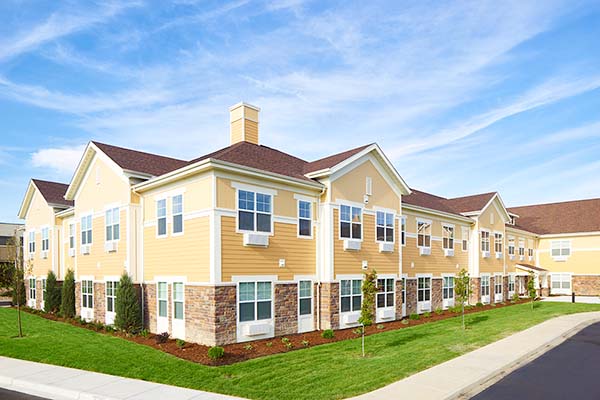Most seniors pay for assisted living using a variety of resources and it can be hard to navigate all of them. Here, we will cover a bit about how social security can pay for assisted living and how much social security you can expect to be contributed towards assisted living costs. Additionally, we will cover Social Security Disability and Supplemental Security Income as options as well as list some additional options that can be enlisted to help cover the costs of assisted living.
What are Social Security and Assisted Living?
Social Security is a government program for seniors wherein they can receive monthly benefits starting at age 62. This program requires that you have paid into it and the amount of money you are able to withdraw correlates to how much you paid in during your working years. Social security may not cover the entirety of your assisted living costs, but it may be used in addition to other resources to cover costs.
Assisted living can mean a lot of things depending on your needs, but essentially, it is just what the name implies: a living facility with resources to assist in everyday life.
Assisted living care consists of:
- Non-medical services
- Meals
- Group activities
- Health services
- Personal care
- Activities of daily living, including:
- Bathing
- Grooming
- Getting dressed
- Mobility
Assisted living facilities offer a variety of care. Some allow their residents to live nearly entirely independently and offer assistance with mealtimes and community events while others offer full-time care or even memory care.
Can Social Security Pay for Assisted Living?
Social security benefits can be used at the discretion of the receiver, they can spend their benefits however they see fit. So there are no applications or forms to fill out if you would like to spend your social security benefits on assisted living.
Social security is a primary source of reliable income for any seniors, though it is unlikely that it will cover all of the cost of an assisted living facility.
Figures vary from state to state, however, in 2021 the average social security benefit was $1,543 per month.
According to the Genworth Cost of Care Survey, assisted living costs average:
- $141 per day
- $4,300 per month; or
- $51,600 per year.
This means that a senior that is receiving social security benefits will still need to cover roughly $2,700 a month in assisted living costs. These are just estimates, and costs vary. However, it is important to remember that there are other resources available to cover additional assisted living costs.
- Medicaid
- Social Security Disability Insurance (SSDI)
- Supplemental Security Income (SSI)
- Optional State Supplements (OSS)
Does Social Security Disability Pay for Assisted Living?
SSDI is available for people who are not able to work because of a medical condition that is expected to last for at least one year.
How much you can qualify for depends on the age when you became disabled and the number of years you were able to work before becoming disabled.
To qualify for SSDI, you are required to pass two different earnings tests:
- A recent work test which is based on the age when you became disabled; and
- A duration of work test that will determine the length of time you worked.
For example, if you become disabled at age 30, you will need to have worked for at least 2 years to qualify for SSDI.
If you or your family member believes you may qualify for SSDI, you can apply here.
How much you can expect to receive in SSDI payments will depend and will vary from person to person because SSDI benefits are based on the average lifetime earnings of the disabled individual, but the average is somewhere between $800 and $1800 per month.
The amount of SSDI allotted each month can also be reduced if you collect other disability payments like worker’s comp or temporary state benefits.
As with Social Security benefits, those who receive SSDI benefits are free to use the funds as they see fit, which includes use for assisted living costs.
Does SSI Pay for Assisted Living?
SSI, Supplemental Security Income, are federal benefits for persons with limited income and assets.
Since SSI is a needs-based program, applicants must meet the following requirements:
- Aged 65 or older, blind, or disabled
- Low income
- Low assets
Even if you do not qualify for SSDI, you may qualify for SSI benefits to help supplement your income. There are no restrictions on how SSI is spent, and the average payment for a single person is $700.
SSI payments are sent directly to the recipient who may decide to use it to pay for a portion of their assisted living costs similarly to Social Security benefits.
Do Optional State Supplements Pay for Assisted Living?
Optional State Supplements are state funds that are available, in addition to federal SSI benefits, to help pay for residence in an assisted living community. OSS benefits are based on income and assisted living residents must meet certain eligibility criteria which may differ from state to state.
Unlike all of the previous options we have discussed which go directly to the recipients, OSS payments are made directly to the assisted living facility.
Because of so many variables, it can be difficult to estimate what amount you may expect to receive in OSS — it could range from very little up to $1,000 per month.
Even if a state does not offer OSS, they may offer assistance by limiting the amount that assisted living facilities can charge for room and board. These caps can only be placed on facilities that accept Medicaid, and the limits are only placed on room and board, not other types of care offered by the assisted living facility.
Though most states offer OSS, some states do not:
- Alabama
- Arizona
- Kansas
- Mississippi
- Washington
Supplemental Options to Afford Assisted Living
If you don’t qualify for SSDI or SSI or are still worried about being able to afford an assisted living facility, consider the following supplemental options that, used in combination with Social Security, can help cover the remaining assisted living costs:
- Savings
- Pension payments
- Retirement accounts
- Medicaid
- Long-term care insurance
- VA benefits
- Life insurance settlements
- Reverse mortgage
- Annuities
- Bridge loans
- Personal investments
- Proceeds from the sale of a home
In addition to these various options, many states also provide optional state supplements that can help make assisted living affordable.
Hopefully, your mind is a bit more at ease knowing that there are plenty of options, many through the Social Security system, that will allow you to cover the costs of an assisted living facility. When in doubt, call your facility and speak to someone about what options are available to you.
Senior Care Community in Greeley, Colorado
Grace Pointe Senior Care Community has been providing assisted living, independent living, long-term care, memory care, and senior rehabilitation services to Greeley, Colorado, since 2009.
Grace Pointe is privately and locally owned and staffed by compassionate and skilled caregivers and we are a proud, family-owned business.
If you or a loved one is looking for assisted living services in Colorado, schedule a live tour today at our facility or have a virtual tour from the comfort of your home.










